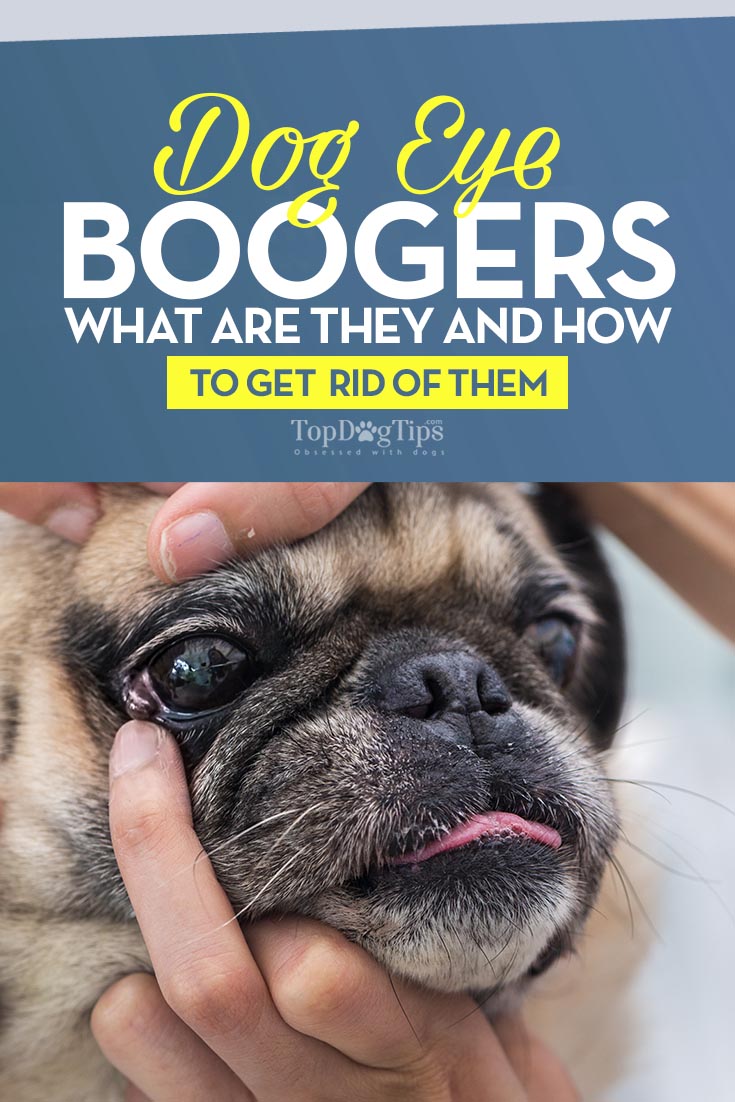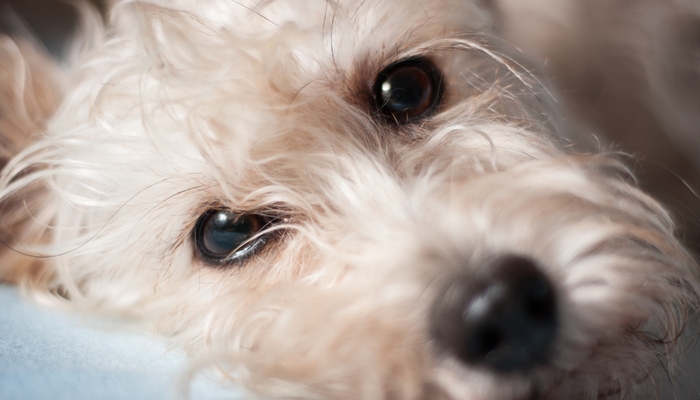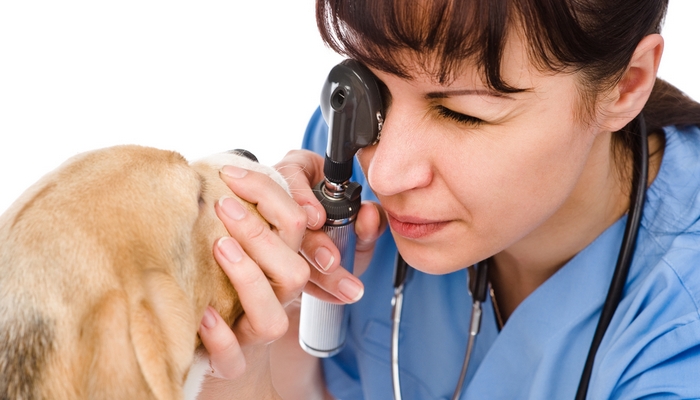There is nothing more gross than snuggling your dog only to find a slimy little sticky thing stuck to you when you pull away. Eye boogers! Not only are dog eye boogers disgusting, they also make Fido's face look unsightly. It makes him look like he needs a good grooming.
It’s common for dogs to have some type of eye discharge that you may refer to as dog eye boogers. Eye discharge is just part of being a dog. Some types of eye discharge are completely normal, including boogers, while other types can indicate serious medical conditions.
Eye boogers, as you know them, are accumulations of dirt and debris pushed up in the corner of your dog’s eyes. Humans, as well as other animals, have some of the same eye functions. While dog eye boogers may not look the greatest, they are typically harmless.
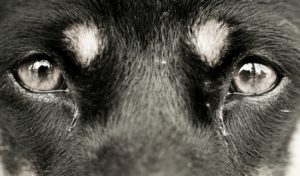 However, there are a few things that you should know about canine eye health to catch any underlying eye issues before they become serious. We'll discuss that more in a moment.
However, there are a few things that you should know about canine eye health to catch any underlying eye issues before they become serious. We'll discuss that more in a moment.
Throughout the day while your dog is running around, he accumulates dust, fine particles and other natural debris on the surface of the eye. To remove any irritants, your dog’s eyes naturally produce tears and moisture that trap and remove this debris each time your dog blinks.
The debris naturally moves toward the corners of the eye where the tear ducts are productive and wash out of the eye area. This debris then accumulates near the corner of the eye, and at times can dry out to form the dreaded dog eye boogers.
RELATED: Top 5 Best Dog Eye Care Products
Dog Eye Boogers
What are they and how to get rid of them?
Dog Eye Allergies
If it seems that your dog’s eye discharge is a little more than usual, it could be that your dog could be experiencing allergies. Like you, your dog may be experiencing a little hay fever or grass allergies.
Dust, pollen, the new carpet you just installed, it could be anything that your dog could possibly be having an allergic reaction to. If the eye discharge seems a little more than usual, and your dog is exhibiting other signs it might be a good idea to schedule a visit with the veterinarian.
Your vet can run specific tests to determine what your dog is allergic to and help you find a suitable treatment. Signs that your dog could be experiencing allergies include:
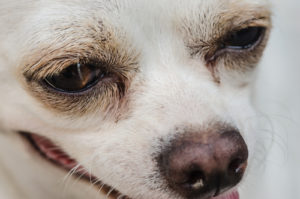 extra eye discharge, including itchiness
extra eye discharge, including itchiness- excessive scratching, red and irritated skin
- vomiting
- sneezing
- red eyes
- paw chewing or swollen paws
If your dog is showing any of these signs, then it is likely that your dog is experiencing an allergy problem. Your veterinarian can help you design a treatment plan that will meet your pet's needs.
RECOMMENDED: Dog Eye Allergies – Symptoms, Reasons and Basic Remedies
Eye Discharge in Dogs
Though allergies are a common nuisance for pets as well as their owners, there can be a number of reasons for eye discharge in dogs. Some types of eye discharge are completely normal, and some are your everyday eye boogers.
Other types of eye discharge indicate that your dog may be having another type of medical problem. It is good to know – while wiping and cleaning up your best friend’s face – what you need to look for, what it means and when you should contact your veterinarian.
Here are 5 of the most common types of eye discharge in dogs:
1. Little dog eye boogers or crustiness
Tears are necessary for maintaining your dog’s eye health as they provide nutrients, like oxygen, to the cornea. Tears help remove any dust and debris that can get caught or trapped on or in the front of the eye.
Since the tears normally drain through ducts at the corner of the eye, the debris can get caught up there. The goop is made up of dried tears, mucus, dead skin cells, dust and more. This should be easy to wipe away with a clean, wet cloth. Your dog should show no other signs of discomfort, itchiness or redness.
2. Clear and watery discharge
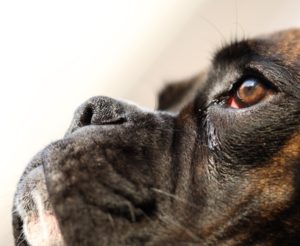 Epiphora or excessive eye watering can be the mark of many eye conditions that can be as simple as too much dust in the eyes to something far more serious like blocked tear ducts or even glaucoma.
Epiphora or excessive eye watering can be the mark of many eye conditions that can be as simple as too much dust in the eyes to something far more serious like blocked tear ducts or even glaucoma.
If your dog is having discomfort from excessive discharge, have your veterinarian take a look. You’d rather be safe than sorry with your best friend’s eyes.
3. Reddish-brown stains
Light or white dogs can often develop reddish-brown or rust colored stains that develop in the inner corner of their eyes and often spread from there. This happens because tears contain a chemical called porphyrin that turns this reddish-brown color upon prolonged exposure to the air, much like rust.
There are cleaning solutions on the market, but using a simple wet cloth several times a day to keep your dog’s face clean can help. Try adding an antibiotic free nutritional supplement to help reduce the porphyrin redness in your dog’s tears. Don’t let it go unattended, even if this is just a cosmetic issue. Once your dog’s fur gets all stained up, it can take several months for it to grow out.
4. Whitish-gray mucus
If you see white mucus, or whitish gray mucus in your dog’s eyes, make an appointment with your veterinarian. Your dog may be suffering from a form of dry eye known as keratoconjunctivitus (KCS).
Your vet can run a test that is called the Schirmer Tear Test, to determine if it is this or any other serious eye condition. Your veterinarian will then determine the best treatment course for your dog, most likely involving cyclosporine, artificial tears, or other medications.
5. Yellow or greenish discharge
If your dog’s eye discharge has signs of yellow or even greenish mucus, then your dog most likely has some type of eye infection. You should contact your veterinarian right away. This is especially true if there looks to be any trauma or redness to the eye.
Getting Rid of Dog Eye Boogers
You may have to face the facts that your best friend will wake you up every single morning with a face full of fresh new dog eye boogers. It’s okay, just keep a box of soft tissues handy and give your dog a morning wipe.
If the dog eye boogers need more than that, moisten a clean washcloth and give a good wash all over your dog’s face. Your dog will appreciate feeling fresh for the day, anyway. If you have a regimen that is prescribed by your doctor for anything more than the basic eye boogers, you can follow it now.
If you do these things every day, your dog will grow accustomed to the routine and may decide that it is an enjoyable part of daily grooming.
Rust stains can pose a trickier problem and require constant attention to gain the upper hand. Besides using a supplement in your dog’s diet to control the porphyrins in its tears, you will need a good hygiene routine.
Flush eyes with a plain saline eye wash that is safe for dogs. Using a cotton ball moisten it with some basic red-eye drops. Rub this solution on the fur underneath and around the eye area. You can also wash the muzzle hair with a mild shampoo and a wet washcloth.
Afterwards, comb a 3% hydrogen peroxide solution through the stained hair. Give it a few moments to activate, then blow dry the area. Trim the hair around the eyes well to avoid any hairs from causing any excessive tearing.
Once you’ve done as much grooming as you can, the biggest thing you can do to prevent future staining on your precious dog, is to keep the area dry. Use glass tube water bottles like the ones made for animals in cages instead of bowls, and it is possible to use a little cornstarch to dust the muzzle and between the toes. Take a moment and give your dog a once over several times a day, just to be sure that his face is clean and dry.
Dog eye boogers are one thing, stains are another. No matter what your dog’s morning eye grooming issue is, he’s your best friend, and you have a responsibility to grab another Kleenex and wipe those eye boogers away.
READ NEXT: How To Clean Dog Tear Stains – A Step-by-Step Video Guide


